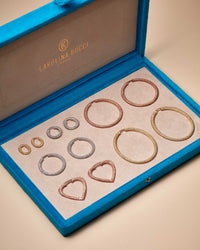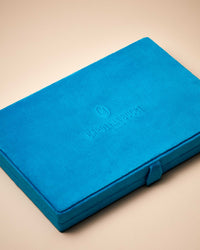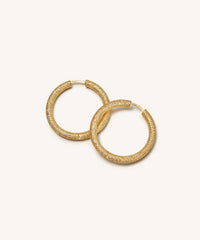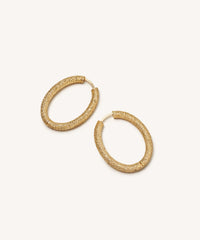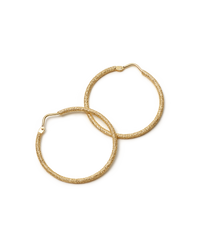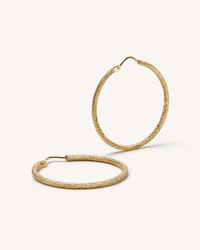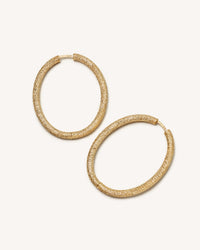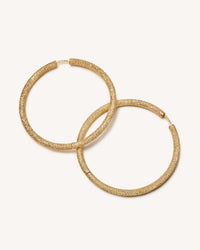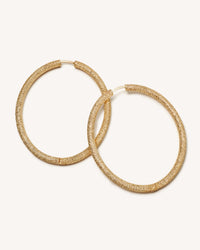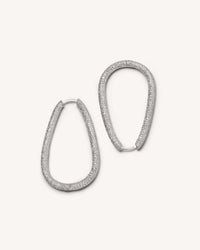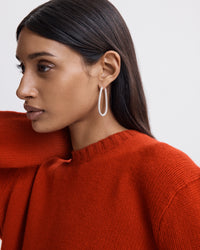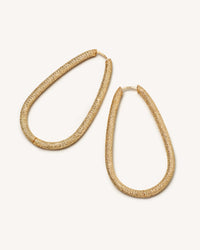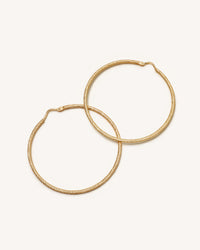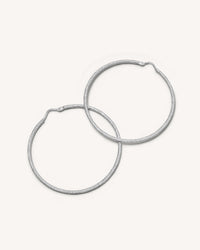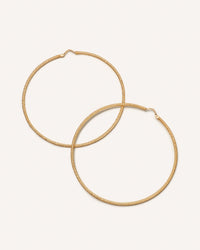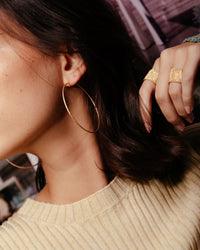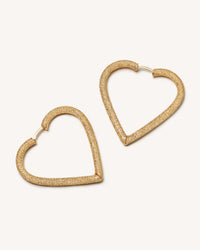Earrings are one of the oldest forms of human adornment. For almost as long as we’ve been roaming this earth, we’ve been poking holes in our ears and sticking things in them. There are references to earrings in the Bible, the world’s oldest mummified body had its ear pierced (so did King Tut), and some of the earliest evidence of earrings can be traced back to 9th century BC, or around 10,000 years ago. They were worn all over the world by men and women alike. (And by cats in Egypt, too.)
Hoop earrings have a particularly long and diverse history, spanning many different cultures and periods. They originated in Africa, and could also be found across regions we now consider Europe, Asia, and the Middle East. A scan of current museum collections reveals that they were made of all sorts of materials, from bone, shells, and jade to gold, silver, and bronze. As time went on, their design only became more intricate and ornate, but even some of the oldest examples of hoop earrings are stunning in their craftsmanship.
Like any form of fashion, earrings have always been both decorative and symbolic in their use. They could represent wealth and power, affiliation to a certain social or ethnic group, as well as the wearer’s age and marital status. In ancient Egypt, royals wore large gold hoops to flaunt their status, for example, while in ancient Persia, soldiers wore hoop earrings in each ear, perhaps as a good luck charm. Julius Caesar wore hoop earrings when he held power in ancient Rome. Meanwhile, Greek goldsmiths embellished their hoops with gemstones and molded them in various shapes to honor the gods. In many cultures, earrings were also worn to ward off evil spirits.















